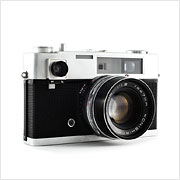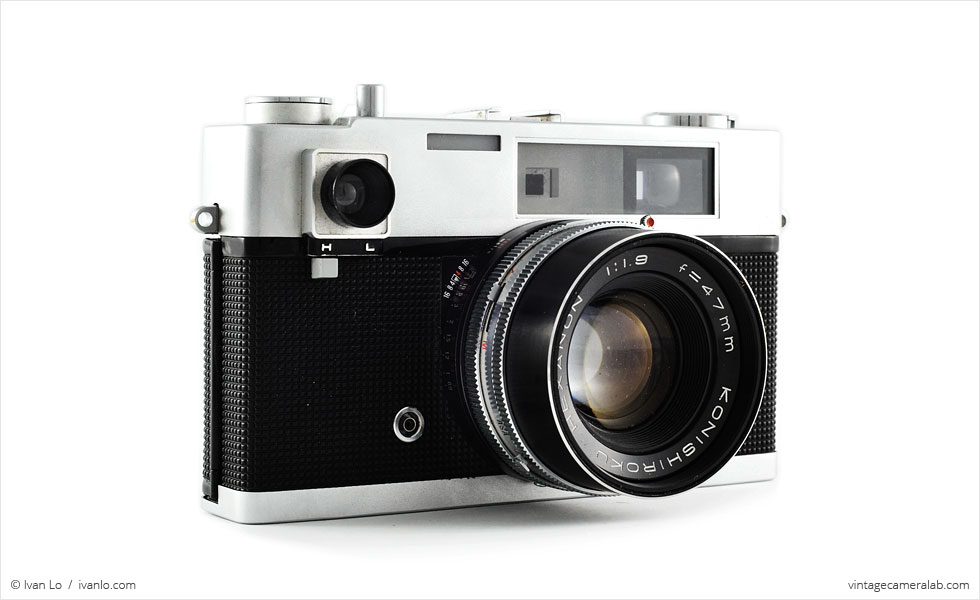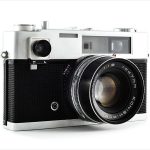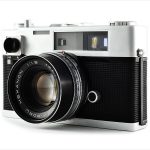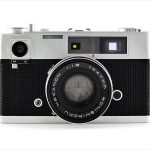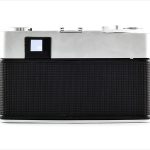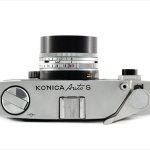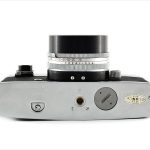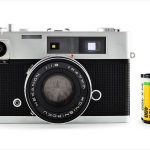Konica Auto S Specifications
| Manufacturer: | Konishiroku Shashin Kogyo K.K. |
| Origin: | Japan |
| Made in: | Japan |
| Introduced: | 1963 |
| Type: | Rangefinder |
| Format: | 135 Film |
| Dimensions: | 14 x 8.7 x 7.5 cm |
Konica Auto S Overview
The Konica Auto S is the first ever automatic exposure 35mm camera to be powered by a cadmium sulfide meter. Introduced by Konishiroku Shashin Kogyo K.K. in 1963, decades before it became officially known as Konica, the Auto S is also the first automatic exposure model in the “S” line of classically designed compact rangefinders.
Central to the Auto S is its Konishiroku Hexanon 47mm f/1.9 lens and Copal shutter. Like many fixed-lens cameras of the era, the lens barrel is home to many of the controls: at the base is the focus ring with integrated knob, next up is the aperture dial with the self-timer and flash sync mode selector just above it, then there’s the shutter speed (1 to 1/500 seconds and bulb), and film speed selector just underneath the integrated pull-out lens hood. Sharing the front plate with the lens is a flash sync socket and the light meter (or “electric eye”) above it with high and low settings for daylight and indoor shots, respectively. On the top plate above the electric eye is the film advance lever with frame counter and the shutter button with cable release socket. On the other side of the cold shoe is the pop-up film rewind knob.
I got this camera through a trade with one of my friends who was looking for a Canonet QL17 G-III. I just so happened to own two of those Canonets so I gave one to him in exchange for this beautiful Konica Auto S. My copy is in very good condition with only some extremely minor paint loss and a small crack in the viewfinder’s glass which has no effect whatsoever on usability.
All in all, a good trade.
Find your very own Konica Auto S on eBay.
McKeown, James M. and Joan C. McKeown’s Price Guide to Antique and Classic Cameras, 2001-2002. (Grantsburg, WI, USA: Centennial Photo Service, 2001), p 381.
